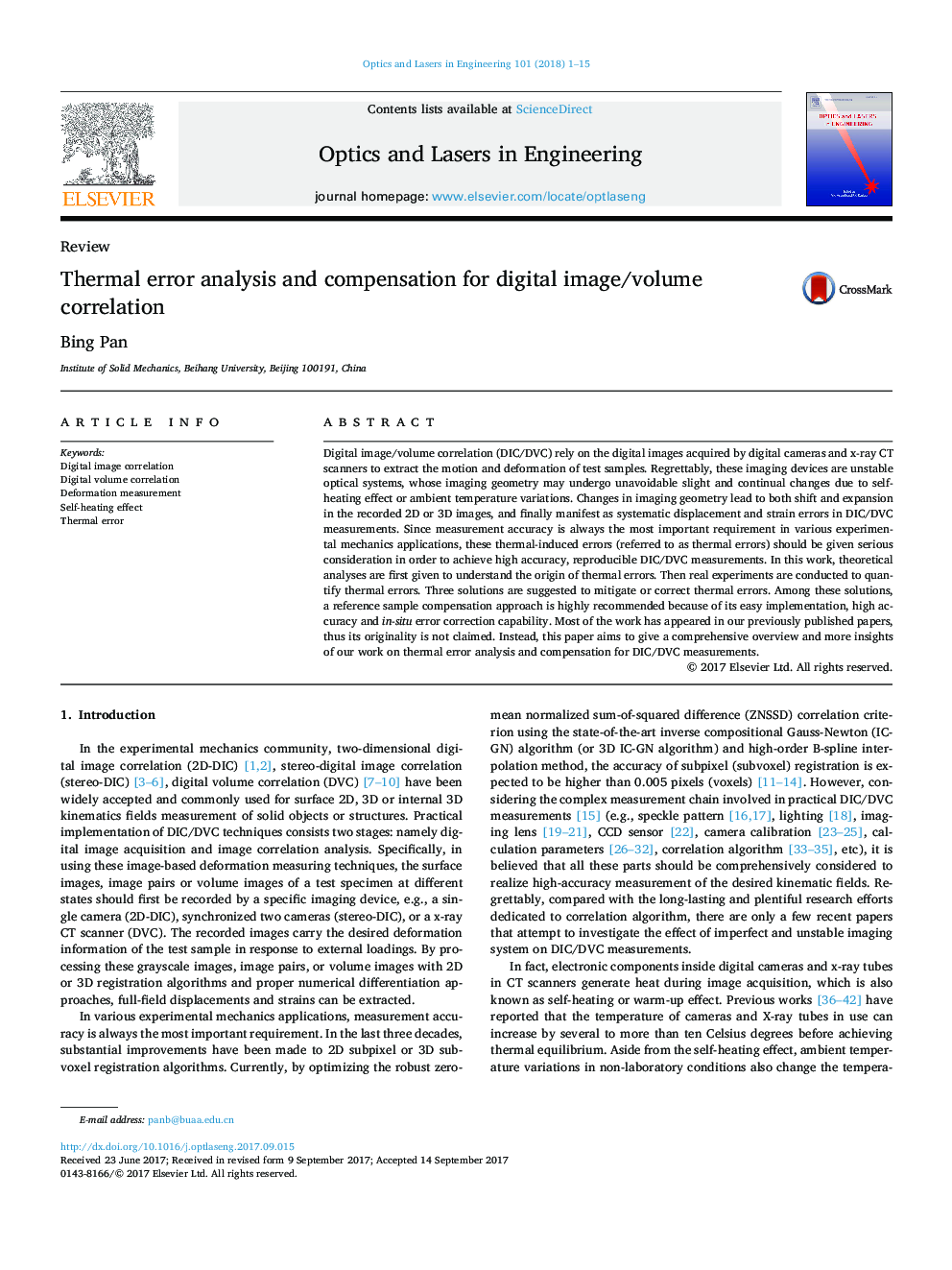| Article ID | Journal | Published Year | Pages | File Type |
|---|---|---|---|---|
| 5007654 | Optics and Lasers in Engineering | 2018 | 15 Pages |
Abstract
Digital image/volume correlation (DIC/DVC) rely on the digital images acquired by digital cameras and x-ray CT scanners to extract the motion and deformation of test samples. Regrettably, these imaging devices are unstable optical systems, whose imaging geometry may undergo unavoidable slight and continual changes due to self-heating effect or ambient temperature variations. Changes in imaging geometry lead to both shift and expansion in the recorded 2D or 3D images, and finally manifest as systematic displacement and strain errors in DIC/DVC measurements. Since measurement accuracy is always the most important requirement in various experimental mechanics applications, these thermal-induced errors (referred to as thermal errors) should be given serious consideration in order to achieve high accuracy, reproducible DIC/DVC measurements. In this work, theoretical analyses are first given to understand the origin of thermal errors. Then real experiments are conducted to quantify thermal errors. Three solutions are suggested to mitigate or correct thermal errors. Among these solutions, a reference sample compensation approach is highly recommended because of its easy implementation, high accuracy and in-situ error correction capability. Most of the work has appeared in our previously published papers, thus its originality is not claimed. Instead, this paper aims to give a comprehensive overview and more insights of our work on thermal error analysis and compensation for DIC/DVC measurements.
Keywords
Related Topics
Physical Sciences and Engineering
Engineering
Electrical and Electronic Engineering
Authors
Pan Bing,
